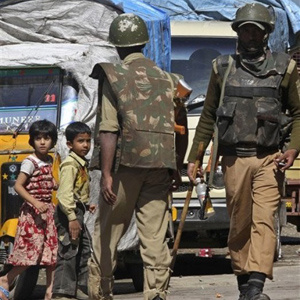More Disturbing than Pakistan’s Domination

After years of exploiting resources, the British legacy for Hindustan (India) was nothing but schism and disintegration. Kashmir, torn between India and Pakistan since the 1947 split, has been the site of three major wars between New Delhi and Islamabad. Even the demarcation of the Ceasefire Line in 1949, the 1972 agreement, which lead to the establishment of the Line of Control (LOC), and the Simla Agreement have not ended the dispute between these subcontinent neighbors. The military arrangement formed by the armies of Pakistan and India at a 5000-meter altitude, perhaps the highest military line in the world, has failed to stop sporadic military conflicts between the two countries.
Upon the establishment of Pakistan, Kashmir, ruled by a Hindu ruler but dominated by a Muslim population, unpredictably joined India. But this was not the entire story. Pashtun attacks on Kashmir and the Hindu ruler’s plea to New Delhi for help paved the way for India’s military intervention. Fear impelled the Hindu ruler to seek an Indian mandate, and this ushered in the emergence of three different approaches in the region:
A group of Kashmiris, supported by the Indian government, defend the status quo. Although siding with a referendum to determine the future of Kashmir, they are aware that considering the ethnic composition of Kashmir, the result will not bring happiness to the Indian rulers. Referendum is a part of their gesture politics.
Another group, including the majority of the Muslim population of the region, and enjoying the support of Pakistan, call for the merger of Kashmir and Pakistan. Their protests and demands are typically cracked down on by an iron-fisted Indian army. Seventy-thousand casualties in 30 years of tension is the best evidence of that.
The last group, detested by both New Delhi and Islamabad, is the one that calls for the formation of an independent state, free from the protection of both India and Pakistan. Its agenda may appear legitimate at first glance; nevertheless, it will usher in a wave of separatist calls in other regional states.
In the case of independence of Kashmir and the formation of a sovereign state, years of promotion of radical Islam by Pakistan to undermine New Delhi’s authority in the region will lead to the rise of a regime with Taliban-like roots that could ultimately turn into a new role model for extremists groups that are active from Xinkiang in China, to the Farkhar Vally in Kyrgyzstan. A new wave of extremism-induced separation-ism will pervade the region, one of the key objectives of AlQaeda.
The recent tension in India-governed Kashmir mirrors New Delhi’s concern about Kashmir’s independence; a scenario even more upsetting than Pakistan’s full sovereignty over Kashmir. The West’s efforts to stop Pakistan and India from engaging in another military conflict will resonate much better if followed with warnings about the likely outcomes of Kashmir’s independence, a threat that will ring alarm bells for global security more loudly than ever before.

